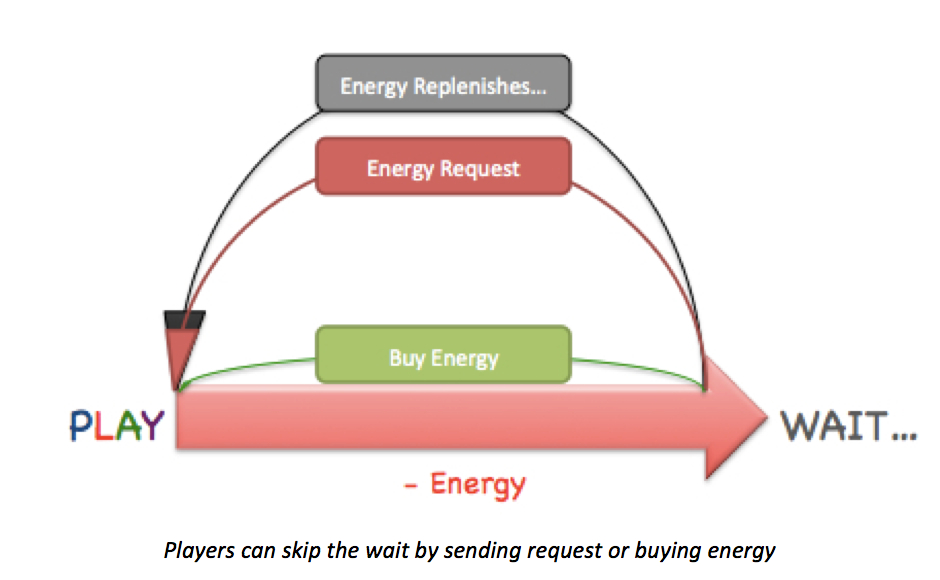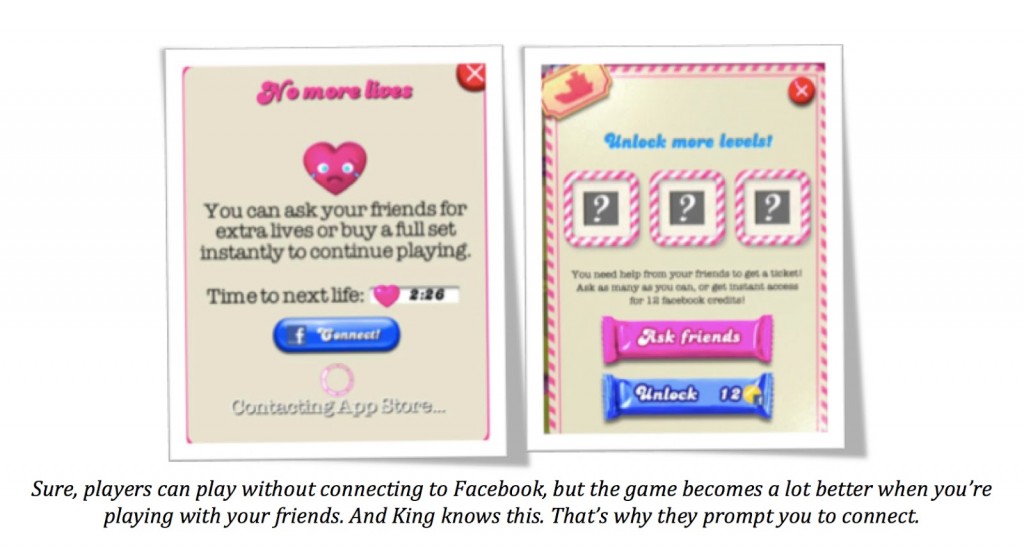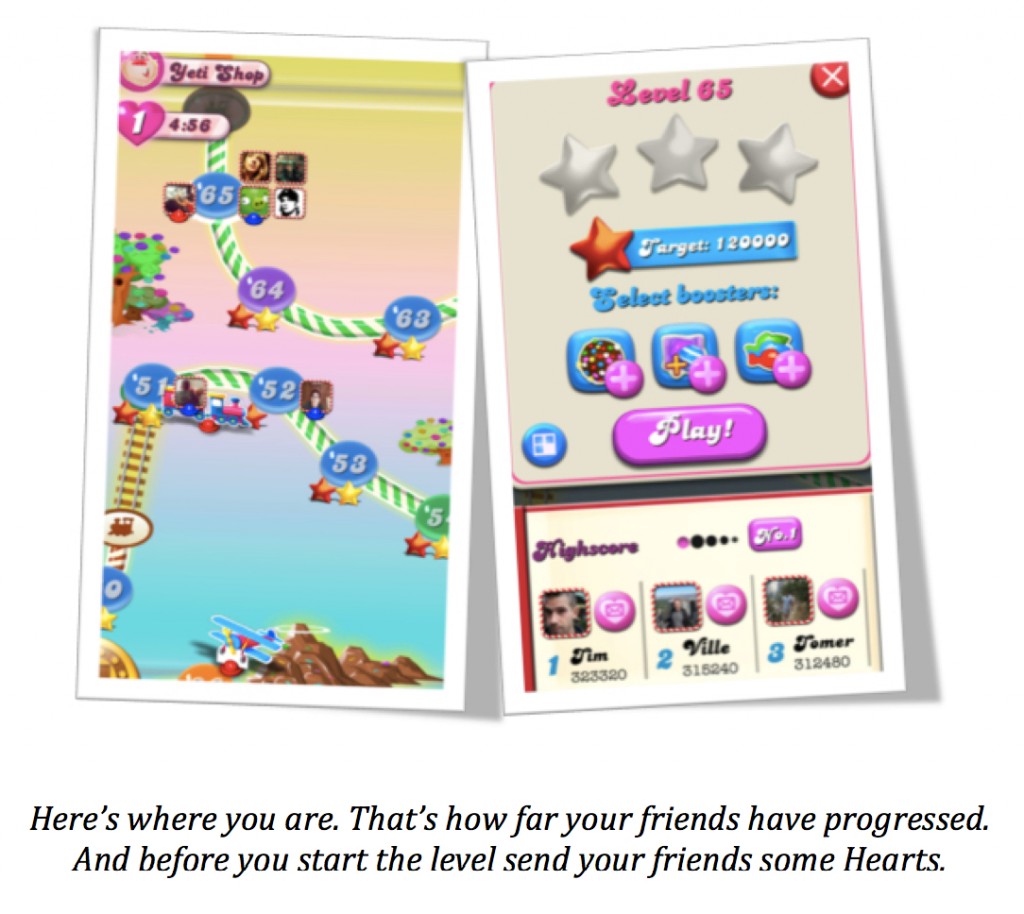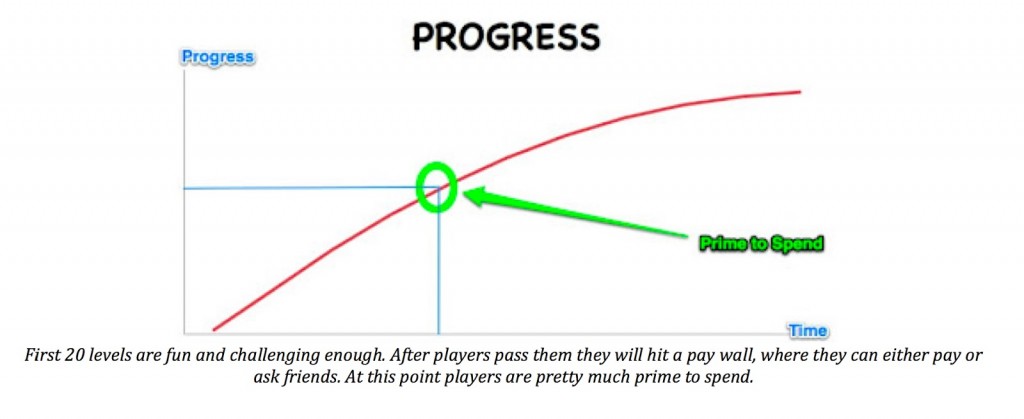· 6 min read
Beating Candy Crush Saga
Michail Katkoff
Product Manager at Supercell
Candy Crush Saga from King rules the top grossing charts because of several key elements:
- it is extremely accessibile, as you can play the game both on and offline
- it has a low-entry barrier
- it takes full use of virality
- the graphics and the sounds of the game are both distinctive and weirdly appealing
- it has map based progress, which ensures relevancy for players who start the game even years apart
So how can you, as a developer, beat this game?
The Core Loop
CCS has an energy based economy. Players consume one Heart (energy) each time they fail or restart a level. Once players are out of Hearts they are left with three options: wait, request or buy.
Players are driven back to the game via timer mechanics (wait for Energy to recharge) and a cocktail of virality, which I’ll break down in the virality part of this text.

Overflow of Meaningful Virality
CCS was initially developed as a Facebook game and, even though it has been fully rewritten for mobile devices, the origin of the game shows – especially in the easiness of sharing and requesting. In fact, it seems that most players let CCS post for them on Facebook.

CCS’s virality consists of two main aspects, which are collaboration and competition. On one hand, players collaborate by sending each other Hearts and by helping each other to progress over pay walls.
Competition on the other hand is driven by map based progress screen and level based leaderboards.

At a first glance CCS might just seem as an app that does all the possible things to spam. But in fact their approach to virality is very thorough and well thought. First of all, virality is a key part of the core loop and acts very similar to a premium currency.
Secondly, CCS’s virality is (almost) always shareworthy and clickworthy. Thirdly, the way CCS has integrated collaboration into the game is beautiful: the helping player is always compelled to see how well the helped player is doing. In other words CCS creates competition via collaboration.
Shareworthy conditions
- Instrumental: The feed is a result of rewards or it is incentivized i.e. it signals a prospect of rewards in case another player responds; for example: help for progress unlocks
- Hedonistic: The feed allows to show off personal achievements and/or creativity
- Socially obligating: The feed seeks others’ commitment via the promise of mutual benefits, or via a social gesture, e.g. a partnership or investment
- Altruistic: The feed provides an increased feeling of self-worth while giving something out for free or for helping (‘Jack helped Timur to build in Millionaire City!’)
Clickworthy conditions
- Rewarding: Responding to the feed is incentivized (promises instant rewards or progression)
- Provocative: The feed provokes the player to return back to the game through competition (‘Have revenge’), empathy (‘save the panda’), or curiosity (‘Jack just earned a million dollars’)
- Socially obligating: The feed is persuasive through a reciprocal gesture (e.g. gifting, cry for help), or a social tie/ gesture that it represents (‘Linda made an investment on You’; ‘Jim has new buildings in his/her city. Thanks to those who helped!’)
Competition encouraged by:
- Friends visiting each other’s game areas (visits can be driven by quests or by rewarding the player)
- Leaderboards (How many levels ahead Jason is compared to Jack)
- Bragging feeds (“I’ve completed Building X”)
- Requests that tell how far the player is in the game (“Help me defeat Enemy Y”)
Small Price Points and Huge Revenue
There’s no premium currency in CCS. Players can’t buy bundles of resources. The most expensive purchase player can make is $39.99 and this purchase can only be made once.
In fact, the bulk of the purchases in the game consist of buying extra moves and hearts, which both cost $0.99. Yet despite all of these limitations CCS monetizes extremely well using effectively three different purchase categories: permanent boosters, consumable boosters and pay-to-continue.
Permanent Boosters
There are three different permanent boosters player can buy. These boosters are sold in the in- game shop and there’s literally no promotion inside the game to pushing these boosters. To me this is a sign that these booster don’t sell too well and/or they mess up retention and monetization for players who have bought them (game might feel too easy for players who purchase a permanent booster).
Consumable Boosters
Before player starts level they can purchase three different kind of consumable boosters, which help by giving a head start. These consumable boosters are unlocked by progress and they vary based on the level (for example in time based levels the boosters are different than with move based levels).
Consumable boosters are pushed to player via introduction mechanics. When a new power-up is unlocked player gets to test it for free thus learning to use the power-up and realizing how the power-up can help to pass a level.
Pay-to-Continue
Bulk of revenue in CCS comes from true micro-transactions as players have to buy Hearts, extra moves or unlock new levels. What creates the strong demand for these purchases is the need to progress and well placed prime-to-spend points.

Perfect and Simplify
So how to beat CCS? Well, first you have to simplify.
Firstly, in comparison to similar titles, such as Zynga‘s Bubble Safari, CCS is a lot simpler. There is no XP bar, nor player levels. There is neither soft currency, nor premium currency. While the in-game shop isn’t promoted and actually has only three items in it. And I think this simplicity is what draws players to play and pay.
Secondly, you have to embrace small price points and really push your players to spend that one dollar. Personally, I’ve noticed that when players who typically avoid IAPs see large packages in the in-game store they become very cautious as if tapping the wrong button will strip them off $20.
But when these same players are surrounded by $1-$3 packages they feel comfortable and actually make several purchases in a row (behaving just like they do when in the AppStore).
In my opinion, the success of CCS is based on great virality integrations (collaborate & compete), emphasis on progress (pay-to-continue), volume based pricing (very cheap one-off consumables) and naturally great gameplay accompanied by awesome graphics.
Can you beat that? Well, it’s not going to be easy.